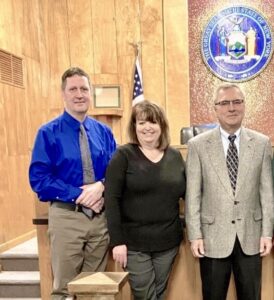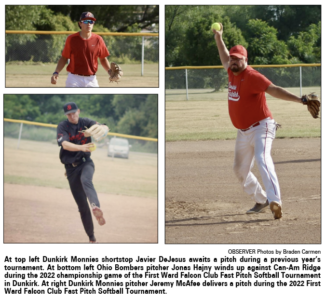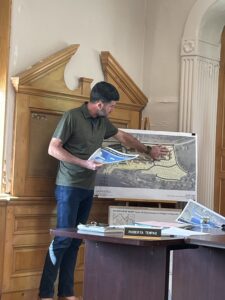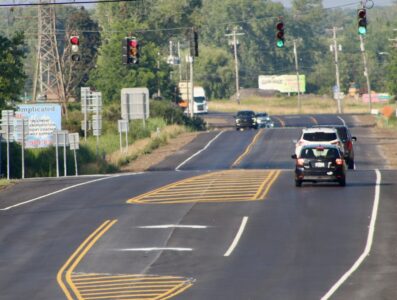Tracking down animals in winter

Photo by Katie Finch Fisher and Grouse tracks cross in the woods.
Animal tracking is a such a popular winter nature topic, I feel unoriginal writing about it. But as snow provides a blank slate for animals to record their comings and goings, it is hard to resist. I love the puzzles presented in the snow. I get satisfaction figuring out the mystery of who was where and doing what when we weren’t looking. And when it’s just too confusing, which sometimes it is, I don’t mind the stream of questions that rise in my mind.
And there’s joy too. Seeing the record of an animal slipping or sliding makes me laugh out loud. Looking at animal tracks and signs is the perfect combination of the knowledge of identification and the drama of storytelling as we look into the mysterious life of a fellow being.
Animals are moving about every day, but not every day is a good time for tracking. It can be hard to recognize tracks on grass or in deep snow. But a light coating of fresh snow, mud, or wet sand is the perfect medium. On a sunny day recently, after a few inches of snow fell, I took a walk on my lunch break at Audubon.
Deer tracks, of course, were everywhere. Not acknowledging the boundaries separating the space we set aside for us and for them, they calmly walked through the parking lot and up the sidewalk. Two parallel lines where they didn’t pick their feet up all the way indicated they walked slowly, not running. No one is there to startle them after everyone goes home for the evening.
A cat, maybe the neighbor’s barn cat, took a stroll through the parking lot and down the trail too. Its round tracks were clear in the soft snow. It checked out the large fort built by summer campers under the Norway Spruce trees. It walked in, explored around all the edges and left by a small hole in the stick wall. I look at the petite tracks and have to remind myself that this is a predator – a hunter and eater of other animals. Perhaps it was attracted by the smell of mice, whose tracks indicated intense travel back and forth between fort and shrubs. Perhaps the mice were still in there huddling in a nest of fallen pine needles and leaves.
Rabbit tracks were also prevalent. Two small front feet, overtaken by two large back feet as the rabbit hopped down the trail and under bushes where only the smaller creatures could fit. There was evidence of their constant eating. Clean, 45-degree angled cuts off of rose bushes. Droppings the size of Coco Puff cereal and the color of sawdust left scattered on the ground. But also dark red and orange spots too. Was it blood? Did the rabbit get eaten there?
On the edge of a field, I came across small holes in the ground, unevenly spaced. A mystery for a moment. Then I realized they connected via a tunnel just under the surface of the snow. The roof of a small mammal tunnel, perhaps a mouse, vole, or shrew, collapsed, melted by the afternoon sun.
Someone walked across the pond. A fox or coyote. I have such trouble telling them apart. But the track was straight. Deliberate. This animal had somewhere to be and waisted no energy getting there. Each back foot fell precisely where the front foot was. Not trusting the ice, I picked up the trail on the other side. But it ducked under the brush, too small a space for me to follow. Did it lead to a den? A feeding location? But my time was up. It was a quick lunch walk. But much was discovered. But still much unknown.
That’s how it is with tracking. At least for me. Maybe someone with more knowledge or more dogged determination could answer all the questions. I look up some of the answers to some of my questions later. It turns out certain plant pigments can turn rabbit urine pale yellow to rust colored.
I love learning new things. But I also don’t mind the not knowing. The questions are what keep me curious. And the curiosity is what keeps me exploring.
I think of one of my usual haunts near home. There is a spot in the forest where a porcupine consistently travels. Its legs are so short that its whole body plows a trench-like path through the deep snow. For years, when the snow gets over a foot, I look for the trench, delighted when I see it. “My” porcupine is still there.
In the same forest, I’ve followed Fisher tracks. For hours I’ve wandered through the woods, seeking the bounding tracks over and under logs, across creeks, ending at trees. Only to find them start up again just away from the tree. Once, I found what I think was the print of a Fisher body, where it jumped down into the snow. Four feet marking the corners of a rectangle, a depression inside, and faint tail mark behind.
There is joy in that kind of journey but also a carrot that keeps me going. Wouldn’t it be amazing to find the animal at the end of the tracks? It is possible with a porcupine, as they are slow-moving and spend a great deal of time resting or feeding in trees. But much less likely with a Fisher. Discovering a place where the Fisher and porcupine met is more likely. Fishers are predators of the quill-covered creatures. That would be quite a discovery. So I keep looking.
Most people would assume that seeing the actual animal is more exciting than looking at something they left behind. Perhaps that’s true for commonly seen animals such as deer, squirrels, and birds. For the less frequently viewed creatures, I’m not convinced. The few times I’ve happened upon a River Otter, Red Fox, or Black Bear, my thoughts revolve around me, not the animal. I think “Oh, my goodness! I can’t believe I’m seeing this! Where’s my camera?!” Many animals are secretive, sly, and do not want to be around humans. But a track or other animal sign doesn’t run away. You can spend time with it. Get close it. Try to put yourself in their place. And, literally, walk with them.
When I look, I mean really look, at an animal’s tracks and signs, I feel I have made the animal’s acquaintance. It’s like looking at my grandma’s handwritten recipes. There is a little bit of her in that inanimate object because she created it. And so it is with animal tracks. With a bit of knowledge and a keen eye, you can make the acquaintance of animals you never even see.
Audubon Community Nature Center builds and nurtures connections between people and nature. ACNC is located just east of Route 62 between Warren and Jamestown. The trails are still open from dawn to dusk as is Liberty, the Bald Eagle. The Nature Center is partially open, including restrooms, the Blue Heron Gift Shop, and some exhibits. More information can be found online at auduboncnc.org or by calling 569-2345.






